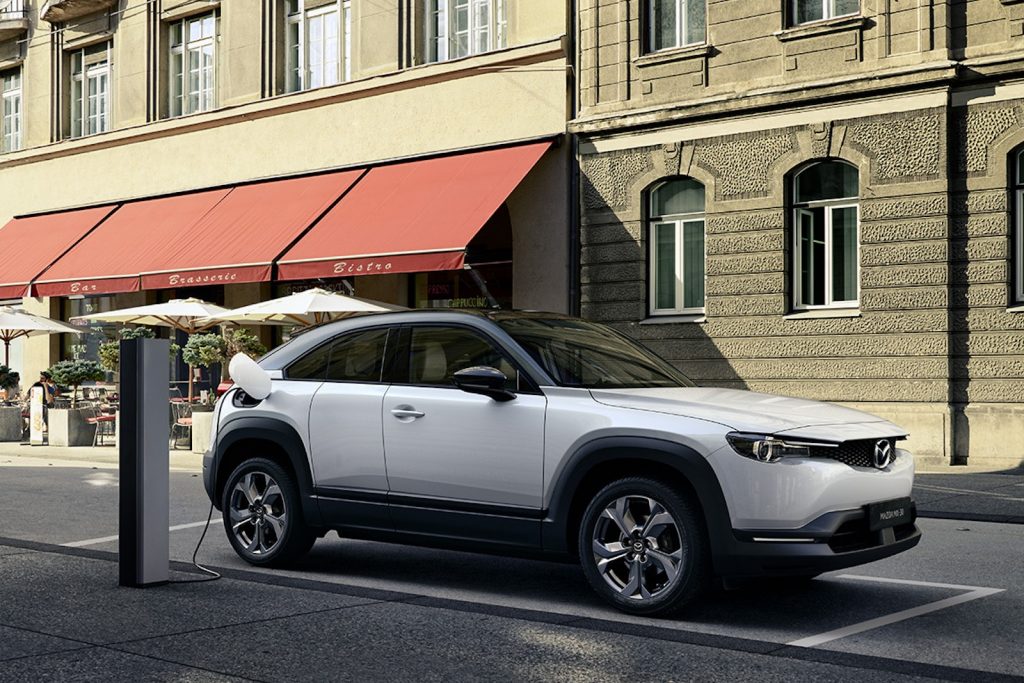
If you’re looking to buy a battery-electric vehicle today, your options are quite limited. But that won’t be the case for long. By the end of next year, automakers plan to add more than three dozen new BEVs – and that doesn’t include variants of existing models, like the single motor versions of the Volkswagen ID.4 and Polestar 2 soon being added.
In Part I we looked at everything from the Audi A6 e-tron to the Lucid Air. Now, let’s look at what’s coming from the back half of the Alphabet.
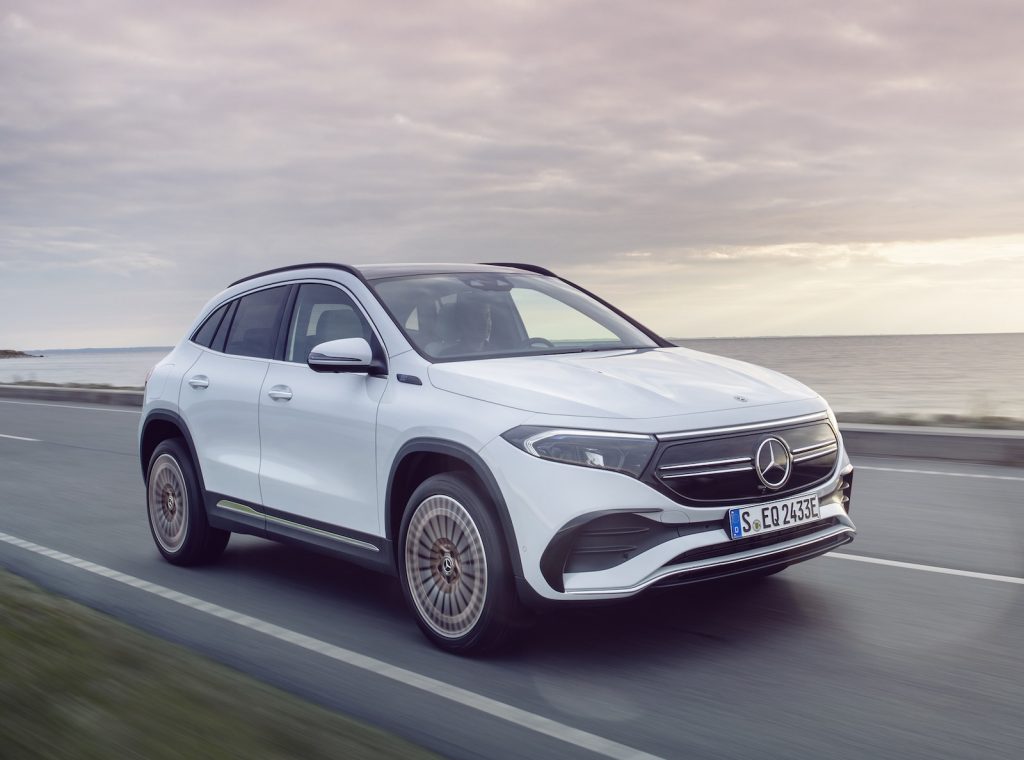
Mazda MX-30. The little Japanese automaker has been slow to embrace electrification, hoping that its SkyActiv technology would let it meet increasingly rigid emissions standards. That all changes with the launch of the Mazda MX-30, its first pure battery-electric vehicle. How well is will fare in a market seeking longer and longer range is uncertain, the little SUV only fitted with a 32 kWh battery pack that can barely deliver 100 miles range. But, after waffling a bit, Mazda now expects to offer an optional rotary engine range extender to give the MX-30, with its 143-hp motor, more utility.
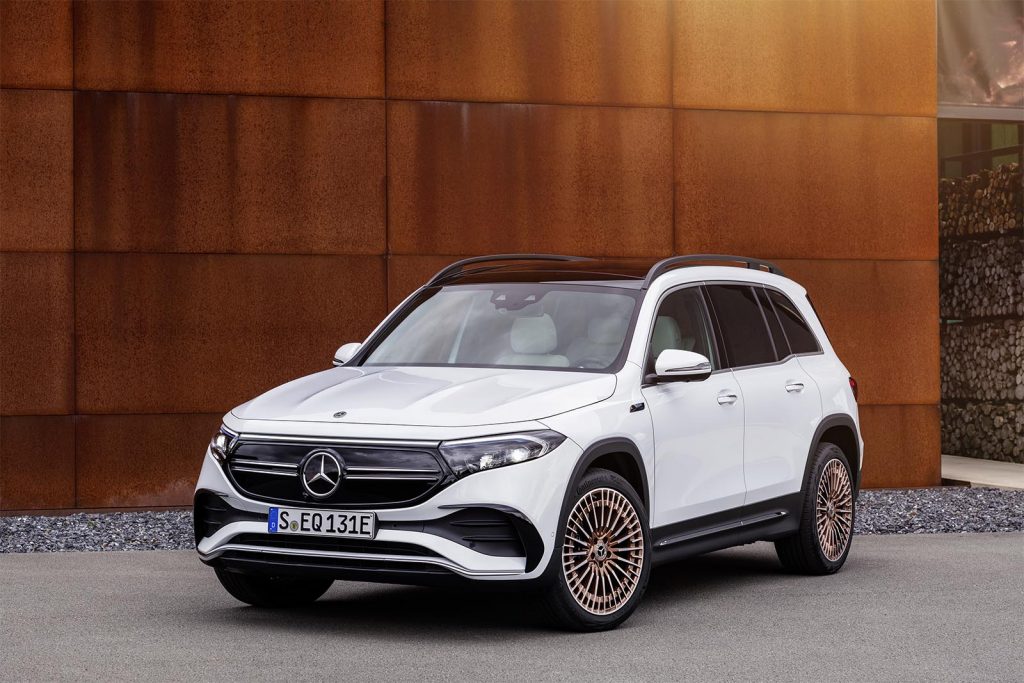
Mercedes-Benz EQA. The German luxury brand might have been slow to embrace battery power but it has truly plugged in, showing off nearly a half-dozen concepts and production models at the recent Munich Motor Show. The family soon will include the EQA. That will become the smallest, all-electric Mercedes SUV when it comes to market next year. Final details for the American model haven’t been released but look for around 250 miles of range from its all-wheel-drive system. Mercedes claims it had more than 20,000 advance orders in hand by the time EQA debuted last February.
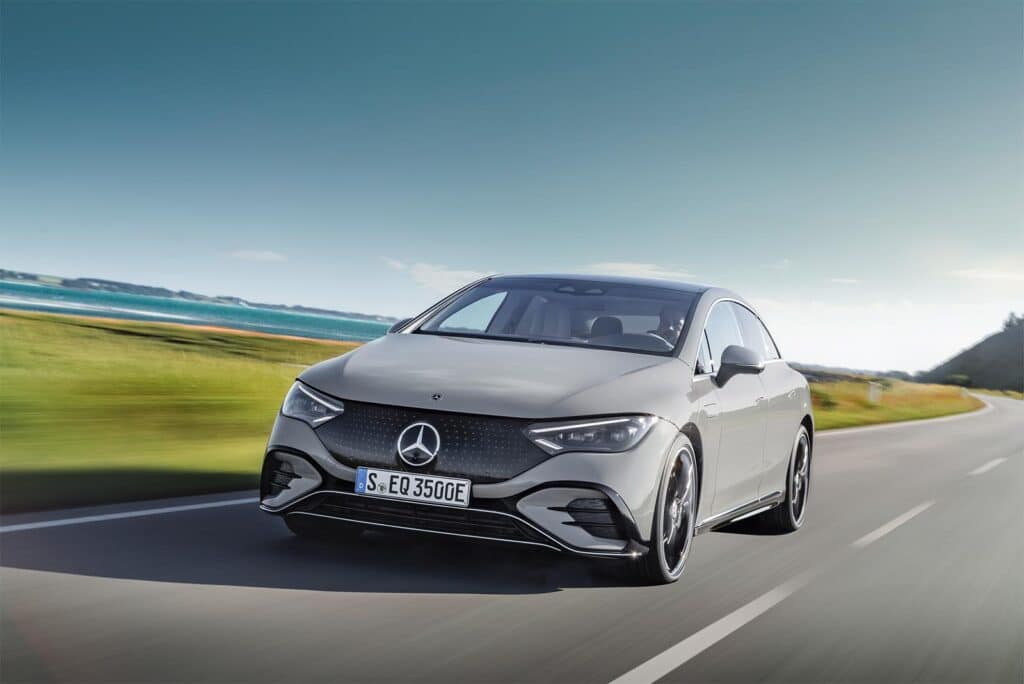
Mercedes-Benz EQB. One of the Munich launches, it will roughly match the existing Mercedes GLB crossover in size. By moving batteries and motors below the load floor, the CUV will have a bit more room for up to seven passengers. Two all-wheel-drive versions will be available at launch early next year, with the EQB 4Matic promising up to 416 km, or 262 miles of range, as well as a sporty 288 horsepower. The EQB 300 4Matic will make about 225 horsepower and yield roughly the same range from its 66.5 kWh battery pack. Those are European numbers, so U.S. range will likely be less.
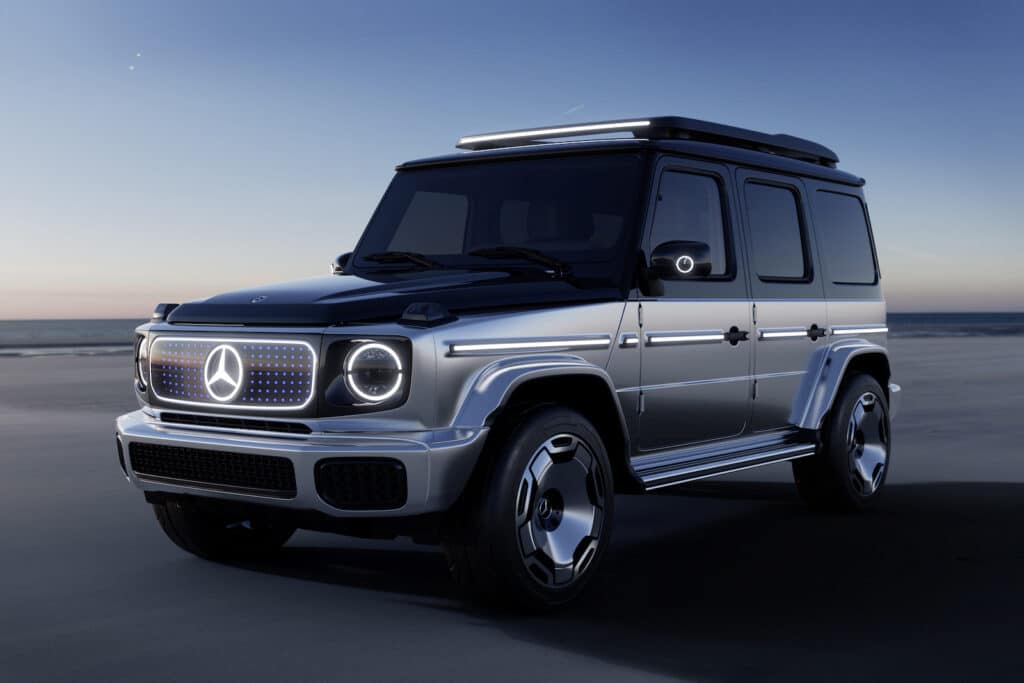
Mercedes-Benz EQE. The 2023 EQE will become the second model line to use the automaker’s new EVA2 electric vehicle architecture, following the launch of the flagship EQS model. And like the bigger sedan, the EQE will adopt a distinctive “one-bow” design language meant to set it apart from traditional Mercedes sedans. The all-electric answer to the classic E-Class will, in typical Mercedes fashion, offer two variants at launch, the EQE 350 with 288 hp, as well as “another model” that wasn’t identified during the sedan’s Munich debut.
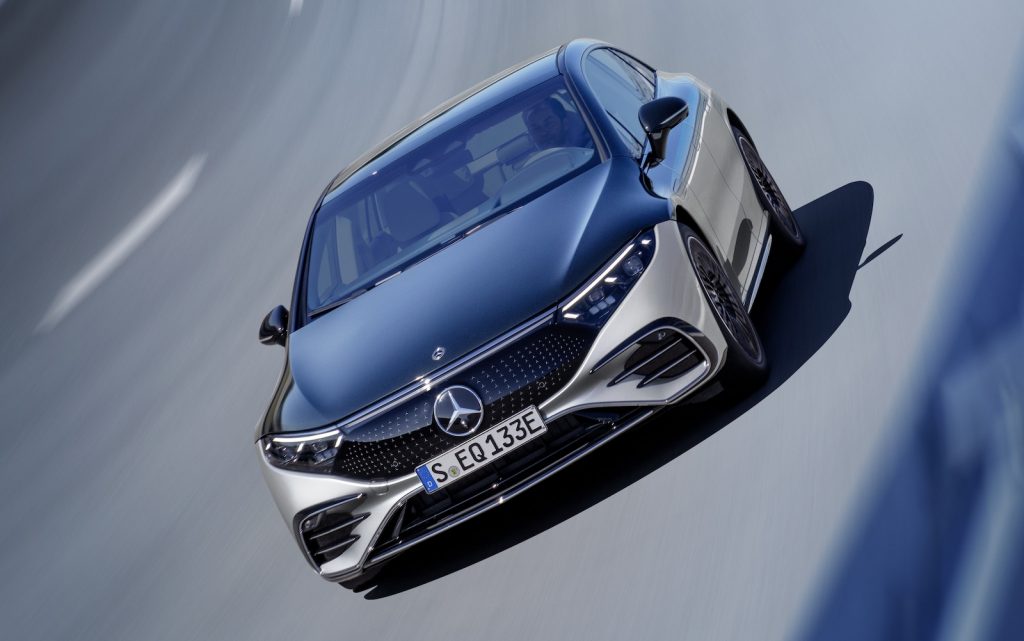
Mercedes-Benz EQG. What we saw in Munich was labeled a “concept” vehicle. But that’s only for the time being. We can expect to see a production version of the battery-powered SUV to start rolling out in production form by late next year. Like the classic G-Class, the show SUV got an independent suspension on the front axle, but retained a rigid torsion beam axle in back. This will be no soft-roader. Expect the production model to retain all the capabilities of the “Gelandewagen.” By using four motors, one for each wheel, the automaker promises “unique driving characteristics both on- and off-road.”
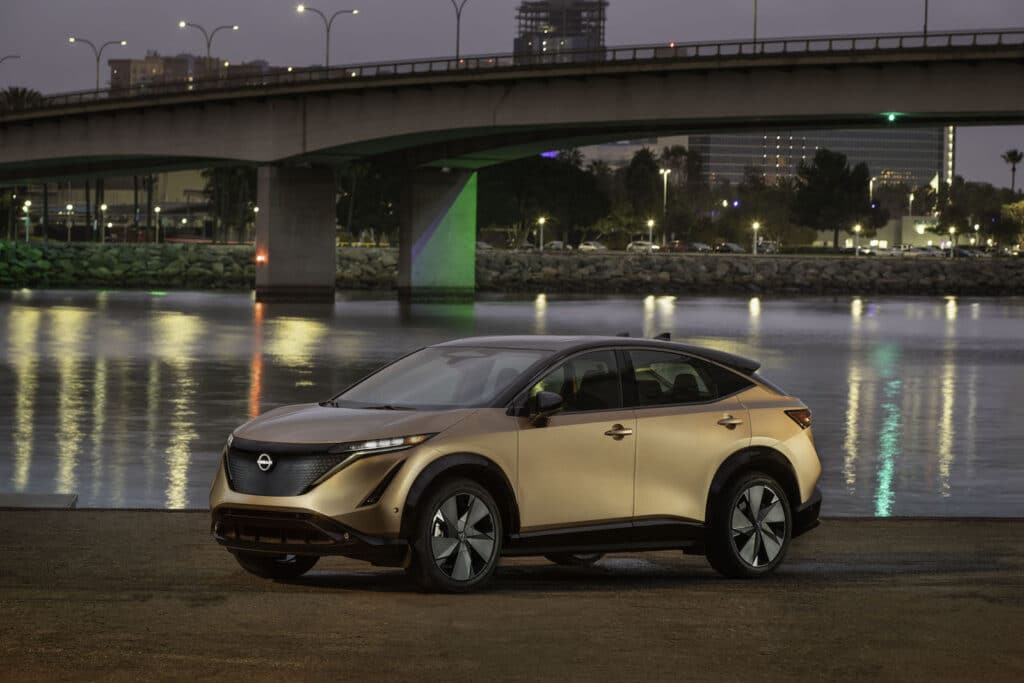
Mercedes-Benz EQS. For Americans, the all-electric alternative to the S-Class becomes Mercedes’ first long-range BEV this year. The sedan features a new “one-bow” design language that will be one of the auto world’s most aerodynamic designs. Inside, it gets an equally radical design anchored by the new pillar-to-pillar Hyperscreen. Add great performance and projected range of 770 kilometers, or nearly 480 miles, per charge, and the EQS takes dead aim at the Tesla Model S. The Munich show, meanwhile, saw the debut of two variants, the ultra-exclusive EQS Maybach and the high performance EQS AMG.
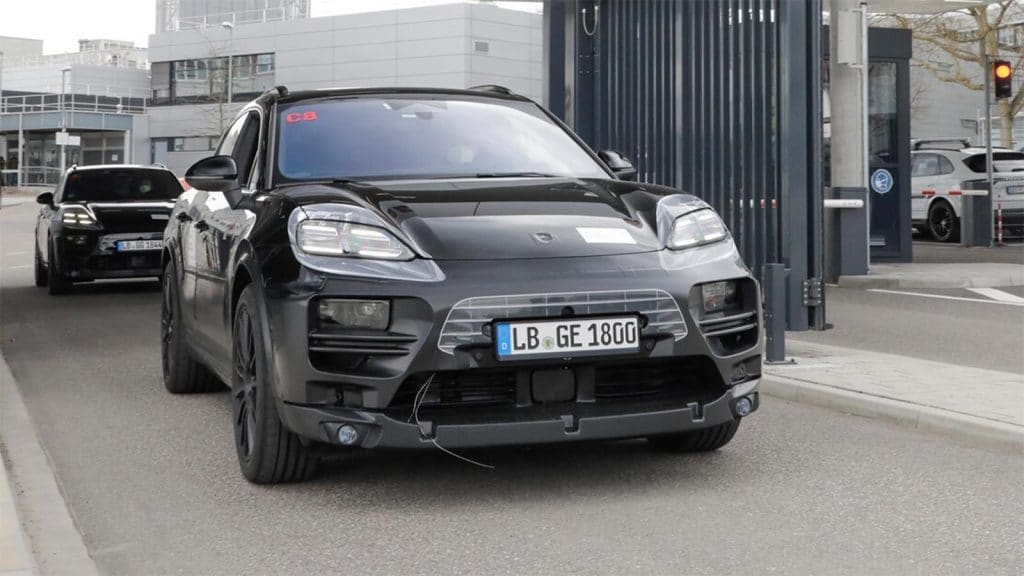
Nissan Ariya. The Japanese automaker was the first to launch a mainstream battery-electric vehicle a decade ago — the Leaf — but it has dragged its feet adding more to the line-up. And sales of the Ariya SUV now have been delayed due to the semiconductor shortage. But it should reach showrooms by early in 2022. Ariya rides on a flexible new architecture, and it gets major upgrades to the drivetrain in the latest-generation Leaf. Several variants will be offered, up to a 380-hp AWD model, and range should top 300 miles with an optional pack. The semi-autonomous Pro Pilot 2.0 system also will be available.
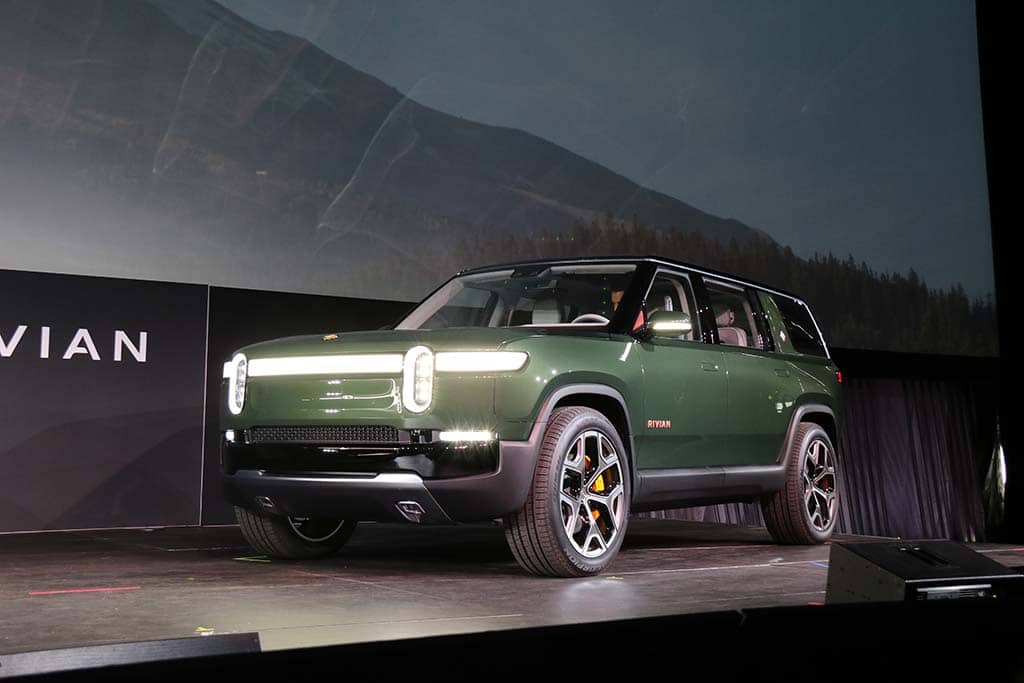
Porsche Macan EV. Porsche might once have seemed like the last brand to go electric but it has given a bear hug to battery power, starting with the Taycan, and with an assortment of other BEVs to follow. That next will include a version of the Macan SUV which, in gas form, is about to get a complete makeover. As with sibling brand Audi, Porsche will offer both ICE and BEV versions of key models. But the Macan EV actually will ride on its own, skateboard architecture, the Premium Platform Electric, or PPE. (Which it will share with Audi.) Expect Porsche-like performance and extremely fast charging.
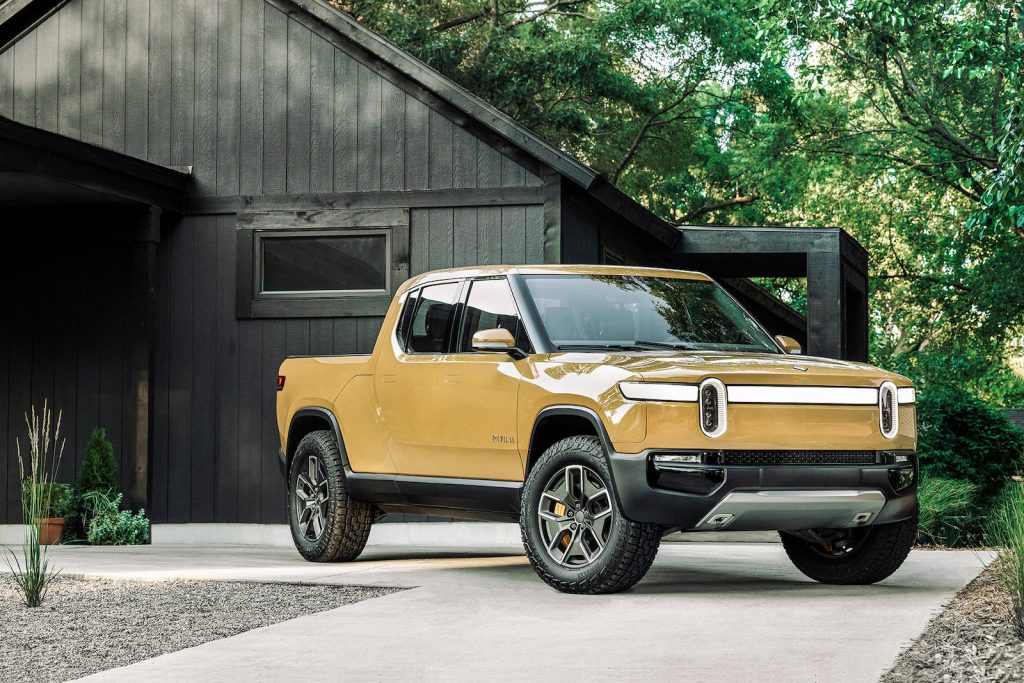
Rivian R1S. This startup is seen as one of the most likely to carve out a solid niche in the automotive market, thanks to some hefty funding an extensive orders for all-electric delivery vans from customers like Amazon Prime. Rivian’s first entry into the retail market will come with a pair of electric trucks, including the R1S sport-utility vehicle. It will offer seating for up to seven, range of anywhere from 230 to 400 miles, depending on the optional battery pack, the ability to tow 7,700 pounds, and sports car like speed. The debut price is expected to be around $73,000.
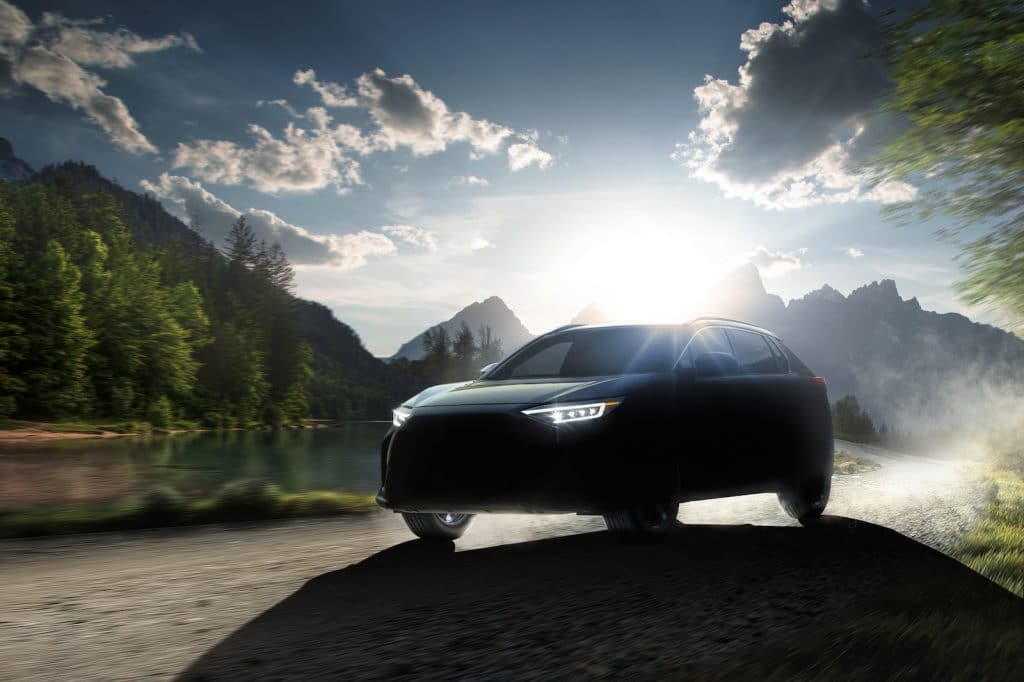
Rivian R1T. The nascent EV maker’s pickup will be first to market, the R1T Launch Edition debuting this month. That will be a premium trim package, with more mainstream versions to follow by early in 2022. As is the norm in the full-size pickup segment, Rivian will offer a broad range of configurations. That includes battery packs of anywhere from 105 to 180 kWh, as well as various motor layouts. Models with the biggest pack, Rivian claims, will hit 60 in just 3 seconds. The R1T will best the Rivian SUV in towing, as it’s rated at up to 11,000 pounds. It also plans to offer a semi-autonomous alternative to Tesla’s Autopilot.
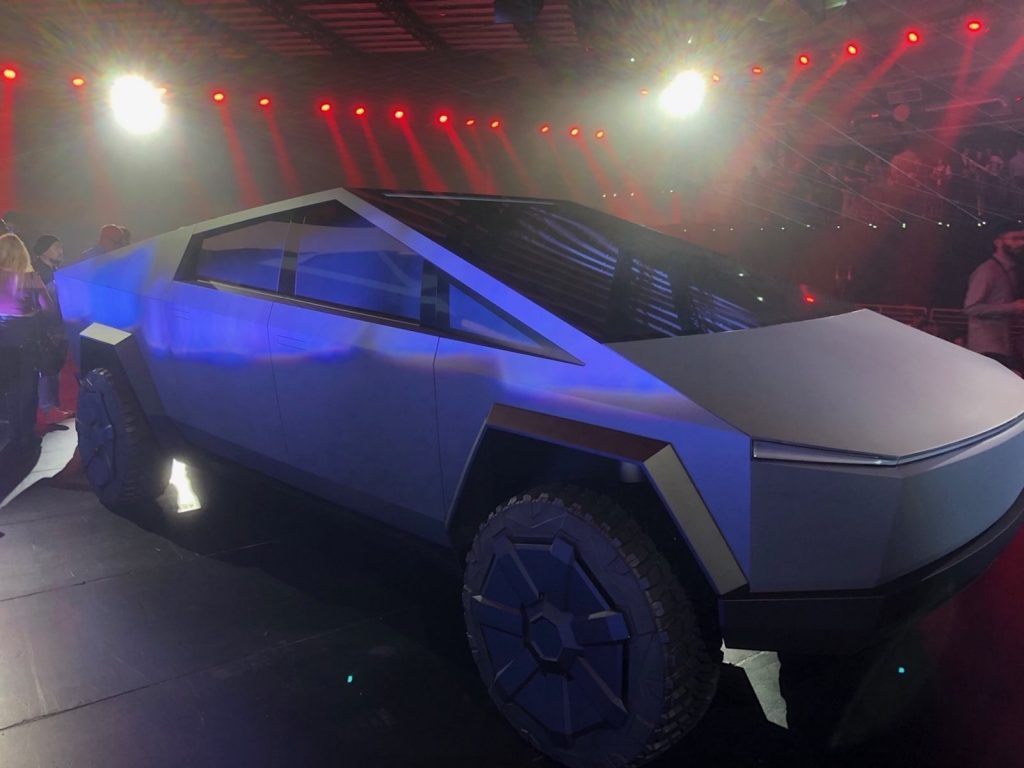
Subaru Solterra. The little Japanese brand has long teased the idea of going electric with various concept vehicles. It’s finally getting there, having finally revealed the production Solterra last month. Subaru still hasn’t offered much in the way of drivetrain details, however. But, like its design, it’s expected the underlying technology will stray little from what Toyota has coming next year in the form of its first long-range BEV, the bZ4X. The two automakers have shown how well they can work together with the latest-generation Toyota GR 86 and Subaru BRZ sports car.
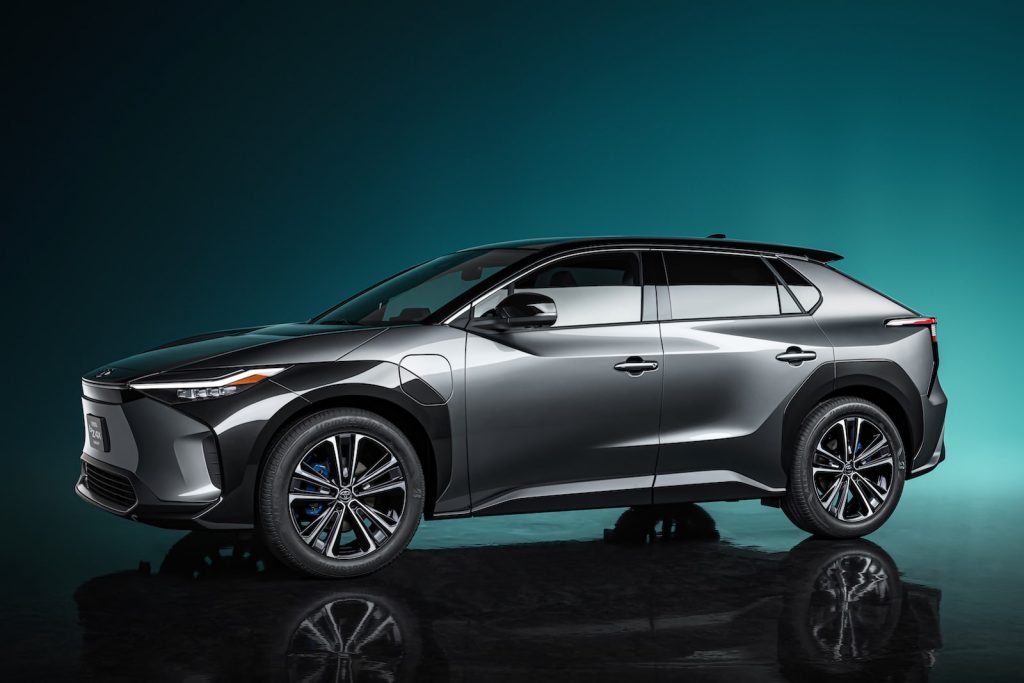
Tesla Cybertruck. As has been the unfortunate norm for the California upstart, Tesla has repeatedly delayed the launch of its first pickup until at least early next year. That means it will follow behind both GMC’s Hummer, Rivian’s R1T, and possibly even the Ford F-150 Lightning and Bollinger B1. That and its radical styling led to Elon Musk suggesting the Cybertruck could be a failure. But that seems unlikely considering Tesla took deposits from more than 200,000 potential customers within days of Cybertruck’s debut — and some observers believe the figure now stands at more than 1 million.
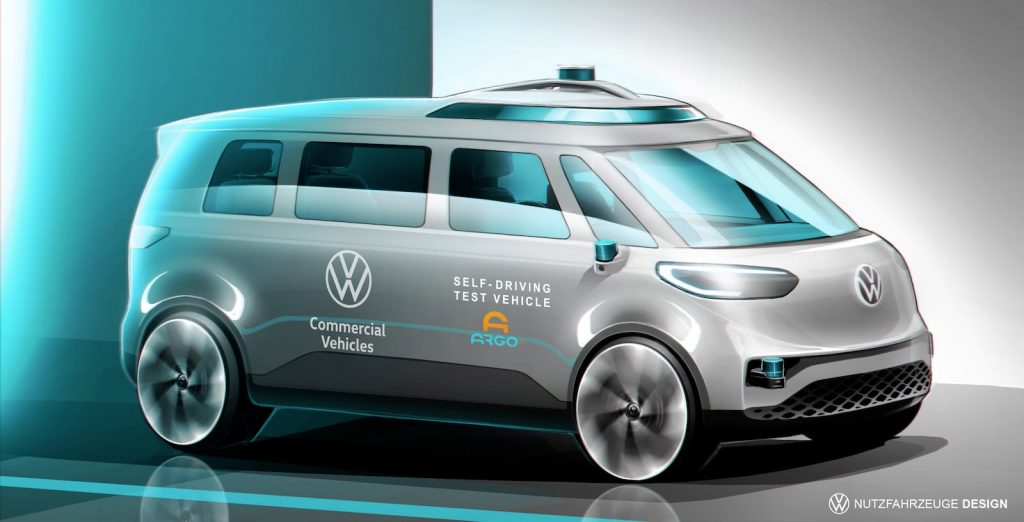
Toyota bZ4X. Officially, the electric SUV Toyota revealed in June was just a prototype — but company officials are doing little to hide the fact that a production version of the new bZ4X Concept is heading to U.S. showrooms, possibly by next year. Details are sparse, but it shares underpinnings and drive tech with the Subaru Solterra. Range is promised at more than 250 miles, performance as “sporty.” For Toyota, the bZ4X will serve as just the entry point. It says there will be seven all-electric bZ, or “Beyond Zero,” models, along with eight other BEVs.
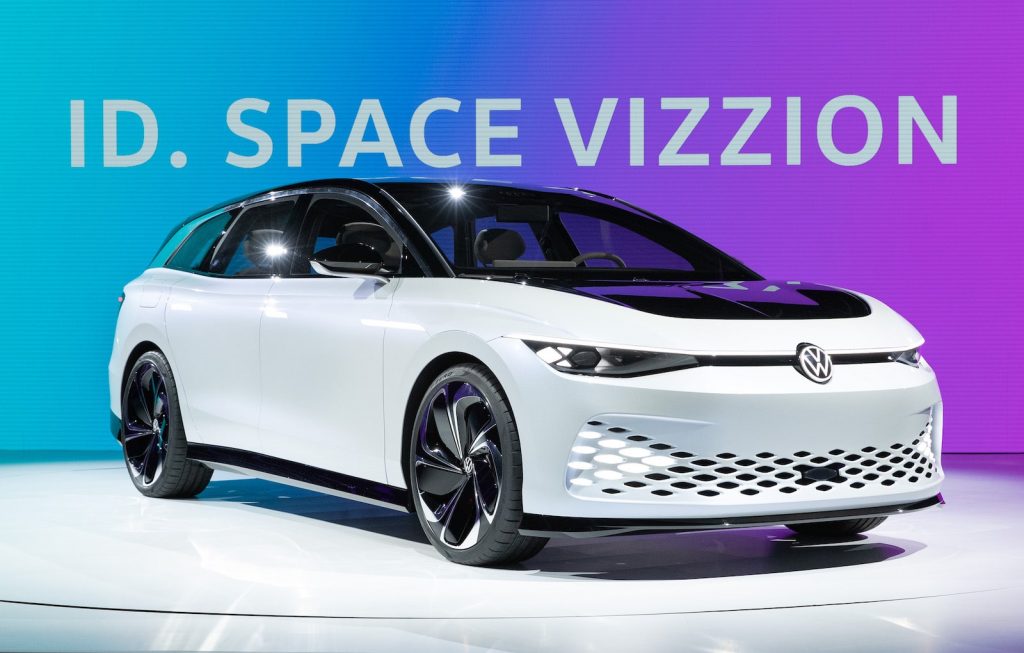
Volkswagen ID.Buzz. For many years, VW has attempted to come up with a replacement for its iconic Microbus. It finally has the right product — albeit one drawing power from a battery pack. While the ID.Buzz has repeatedly been delayed, it is widely expected to land in U.S. showrooms either next year or in 2023. Designed as an eight seater, it will share the same MEB platform and drivetrain system as the ID.4 electric SUV. While the final name could change, VW expects to assemble the battery-powered Microbus in Mexico.
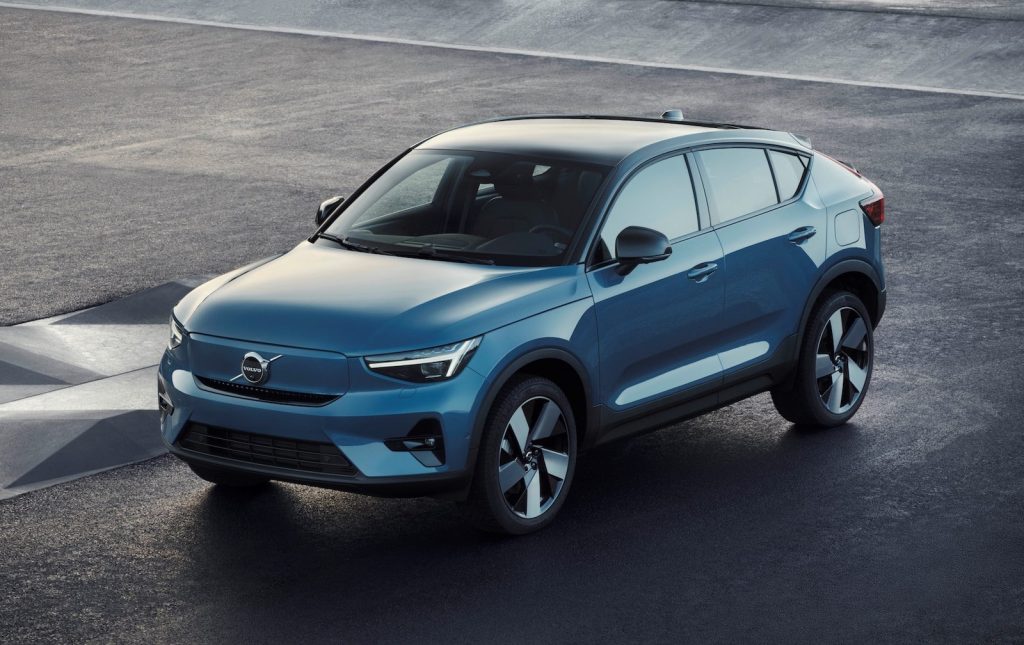
Volkswagen ID.Space Vizzion. VW has launched what is arguably the world’s most expansive — and expensive — battery-car program, investing $86 billion through the end of the decade. It already has the ID.4 on sale in the U.S. and CEO Herbert Diess recently announced that VW will introduce more BEVs in the U.S. than originally planned. That could include both the ID.Life concept introduced at the Munch Motor Show, as well as the ID.Space Vizzion revealed in concept form at the LA Auto Show in 2019. More wagon than crossover, it is widely expected to reach market next year. Look for 300 miles of range.
Volvo C40 Recharge. Volvo brought out its first long-range electric in the form of the XC40 crossover. It’s now preparing to add a second variant in the form of the C40. In a break with its normal nomenclature, the BEV will opt for a sportback, rather than coupe body style. Don’t expect major powertrain changes, the C40 Recharge expected to be powered by a 402-hp, twin motor drive system. In the XC40, it runs for up to 208 miles per charge using a 75-kWh battery pack.
Volvo XC90 Replacement. You can be all but certain this won’t be the electric model’s actual name. While it’s set to replace the Swedish brand’s SUV flagship, Volvo’s CEO recently confided that future models will switch away from their alphanumeric format. “Calling that just a new XC90 would be wrong because this is the really a first of its kind,” explained CEO Håkan Samuelsson. Whatever it’s called, look for its to use a new and larger platform than the C40 Recharge, one specifically designed for Volvo’s largest products. Also expect it to get more range than the current battery models.